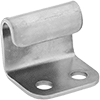Filter by
Weight Capacity
End Fitting Type
Thread Size
Material
Buckle Type
Component
Turnbuckle Type
Load Securement Type
Color
End Fitting Material
DFARS Specialty Metals
Export Control Classification Number (ECCN)
Body Material
Maximum Adjustment
Overall Length
Hook Opening Width
Tie-Down Rings
Other Products















































































